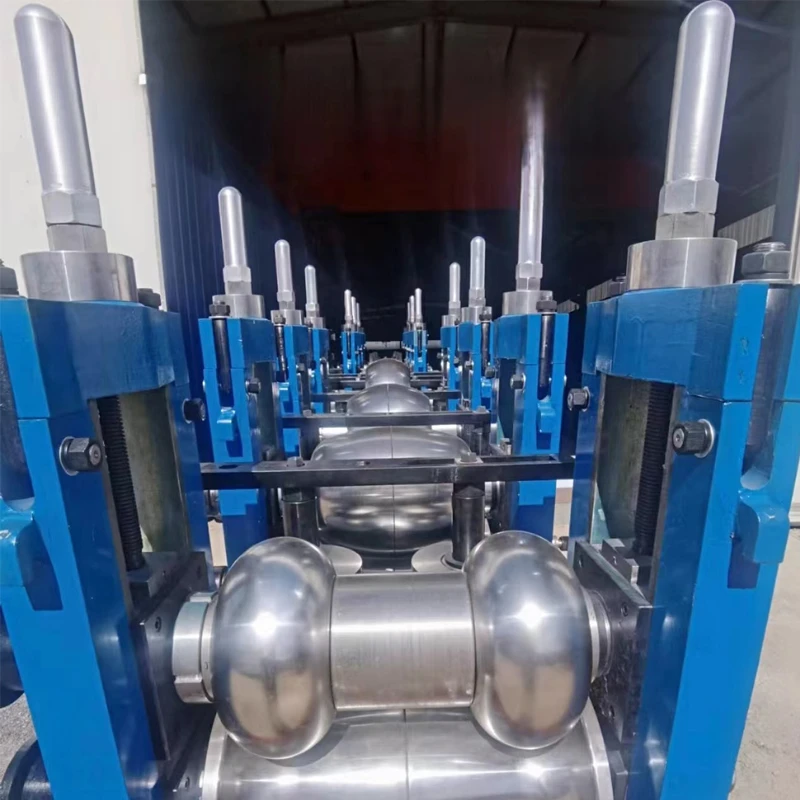Cold Rolling Process in Steel Manufacturing Facilities for Enhanced Material Properties
The Role of Cold Rolling Mills in Steel Plants
Cold rolling mills are essential components of modern steel production, playing a crucial role in the manufacturing of high-quality steel products. These specialized facilities transform semi-finished steel into finely finished products through a process that involves passing the steel through rollers at room temperature. This process enhances the material's strength, surface finish, and overall properties, which are vital for various industrial applications.
Principles of Cold Rolling
The cold rolling process begins with hot-rolled steel sheets or coils. In this state, the steel possesses a coarse surface finish and its dimensions may not be entirely precise. By subjecting these materials to cold rolling, the steel is further processed through a series of rollers that compress and reshape it without the application of heat, resulting in a more refined and precise end product.
Cold rolling works on the principle of plastic deformation, where the flow stress of the material exceeds its yield strength. As the steel passes through the rollers, it experiences a reduction in thickness and an increase in length. This process not only improves dimensional accuracy but also enhances mechanical properties such as yield strength and hardness. The cold rolling operation can produce steel with varying thicknesses and widths, catering to the specific needs of manufacturers across different industries.
Advantages of Cold Rolling
Cold rolling mills provide numerous advantages over hot rolling methods. One significant advantage is the improved surface finish of the steel. Cold-rolled products exhibit finer and smoother surfaces, making them suitable for applications that require aesthetic appeal and a high-quality finish. Additionally, the cold rolling process offers tighter tolerances and dimensional accuracy, which are crucial for components in automotive, aerospace, and construction industries.
Moreover, the cold rolling process imparts enhanced mechanical properties to the steel. As the material undergoes cold deformation, the steel's microstructure is refined, resulting in increased strength and toughness. This makes cold-rolled steel more suitable for high-stress applications, where durability and resistance to deformation are essential.
cold rolling mill in steel plant

Energy Efficiency and Environmental Impact
Modern cold rolling mills are also designed with energy efficiency in mind. The process typically requires less energy compared to hot rolling since it does not involve heating the material. This reduction in energy consumption not only lowers production costs but also contributes to decreased greenhouse gas emissions, promoting a more sustainable manufacturing process. By optimizing equipment and utilizing advanced technologies, steel plants can further minimize their environmental footprint while maintaining high production standards.
Technological Advancements
The cold rolling industry has significantly evolved over the past few decades, driven by advancements in technology. Automation and digitalization have transformed traditional cold rolling mills into smart manufacturing systems. Utilizing sophisticated sensors, data analytics, and machine learning algorithms, steel manufacturers can monitor and optimize the rolling process in real-time, enhancing product quality and reducing waste.
Furthermore, innovations in roller design, lubrication systems, and process control contribute to improved efficiency and output in cold rolling mills. Manufacturers can now produce a wider variety of products, including high-strength steels and specialized alloys tailored to specific applications in industries such as automotive, construction, and appliance manufacturing.
Conclusion
In summary, cold rolling mills are pivotal in the steel manufacturing process, delivering high-quality products with superior mechanical properties and surface finishes. As industries continue to demand more refined and durable materials, the importance of cold rolling technology will only grow. With ongoing advancements in technology and a focus on sustainability, cold rolling mills are poised to remain at the forefront of the steel production landscape, supporting a wide range of applications and contributing to the development of modern infrastructure and consumer products. The role of cold rolling mills is not only integral to steel production but also vital to the ongoing evolution of manufacturing standards in a dynamic global economy.
-
High Frequency Straight Seam Welded Pipe Production Line-BzZhou Xinghua Machinery Equipment Manufacturing Co., LTD.|Precision Welding, High EfficiencyNewsJul.30,2025
-
High Frequency Straight Seam Welded Pipe Production Line|BzZhou Xinghua|Precision Welding&EfficiencyNewsJul.30,2025
-
High Frequency Straight Seam Welded Pipe Production Line - BzZhou Xinghua|Precision Engineering&EfficiencyNewsJul.30,2025
-
High-Frequency Straight Seam Welded Pipe Production Line-BzZhou Xinghua Machinery Equipment Manufacturing Co., LTD.NewsJul.30,2025
-
High-Frequency Straight Seam Welded Pipe Production Line-BzZhou Xinghua Machinery Equipment Manufacturing Co., LTD.|Precision Manufacturing, High EfficiencyNewsJul.30,2025
-
High Frequency Straight Seam Welded Pipe Production Line-BzZhou Xinghua Machinery Equipment Manufacturing Co., LTD.|Precision Steel Pipe Manufacturing&Industrial EfficiencyNewsJul.29,2025


